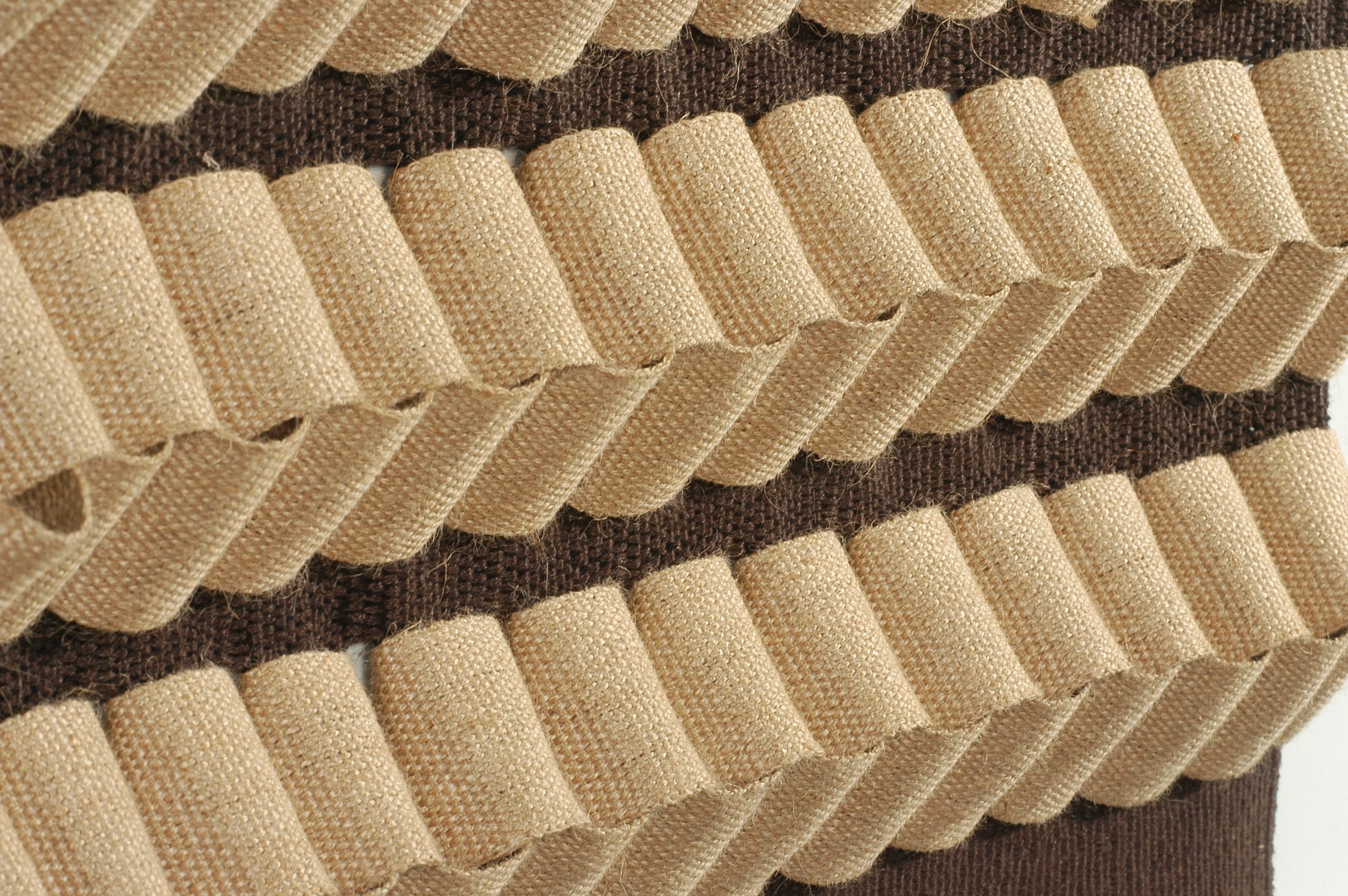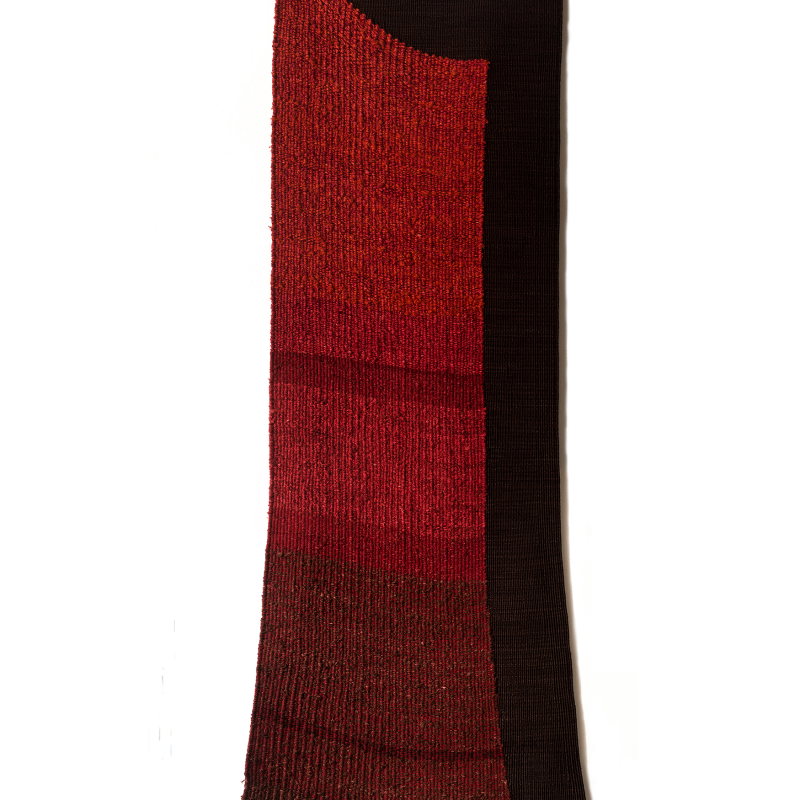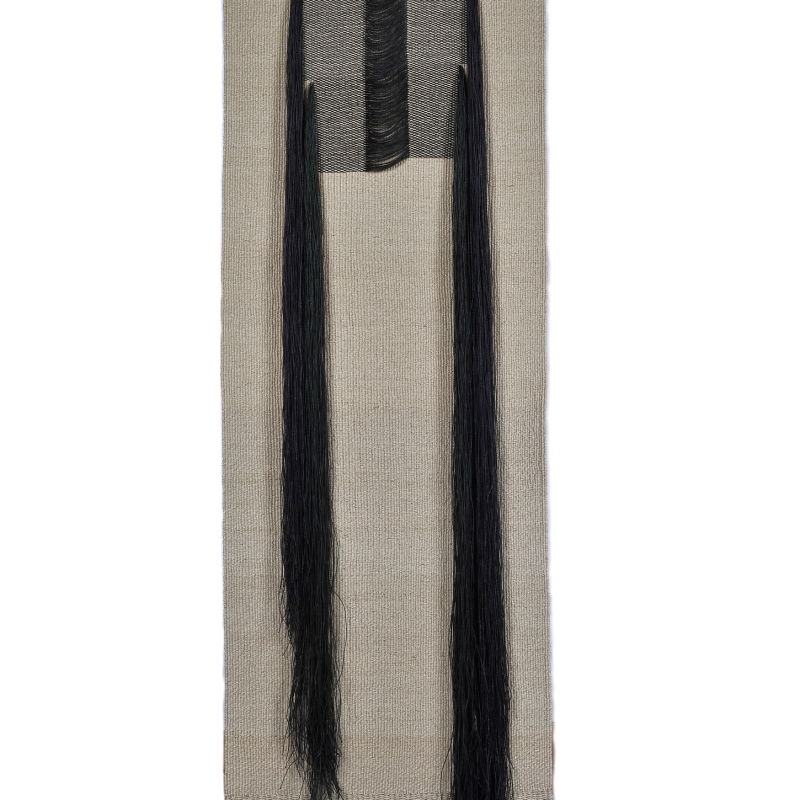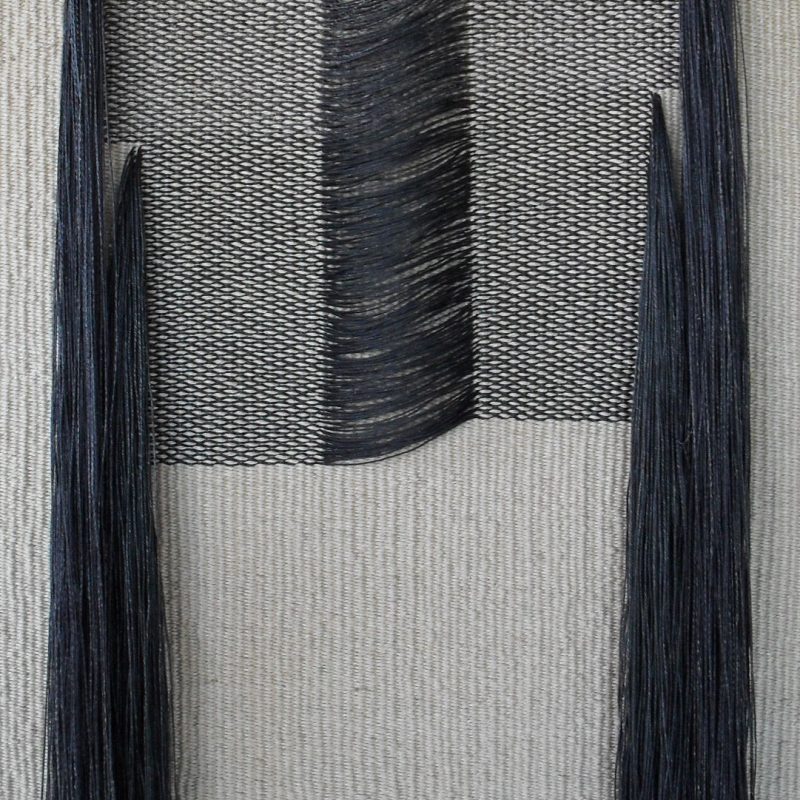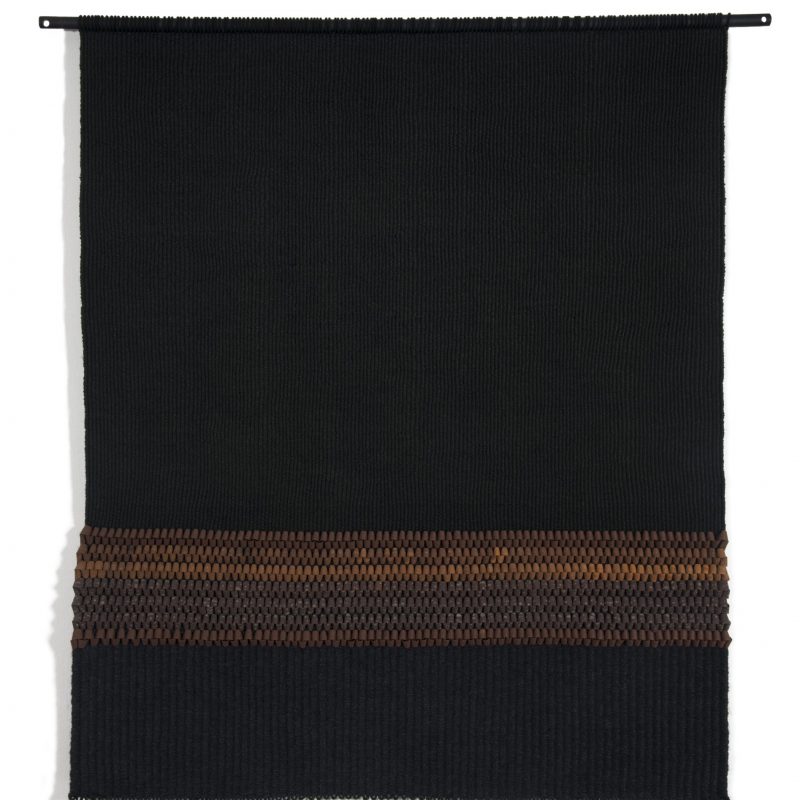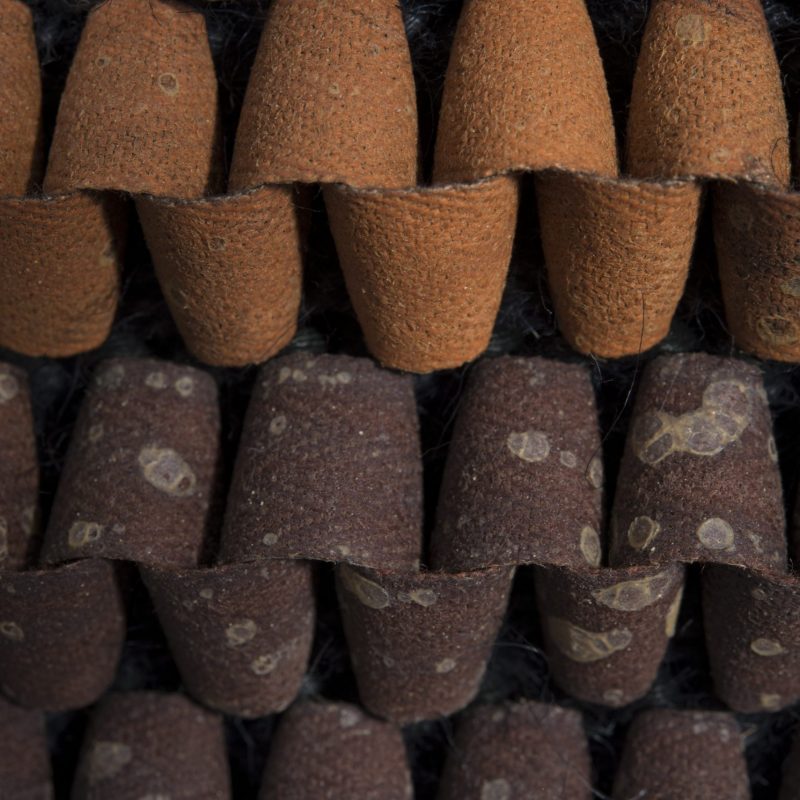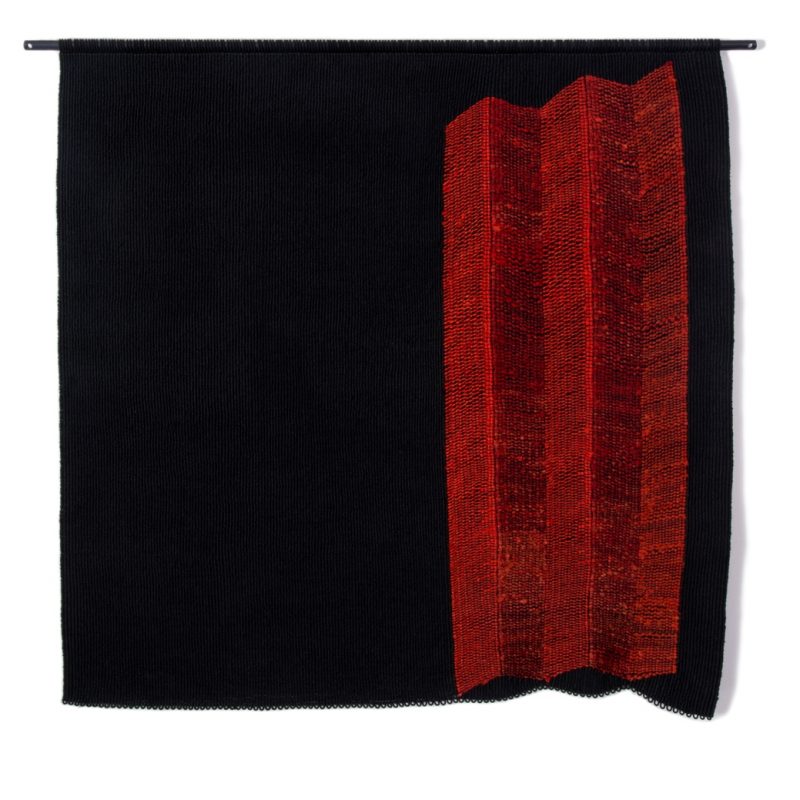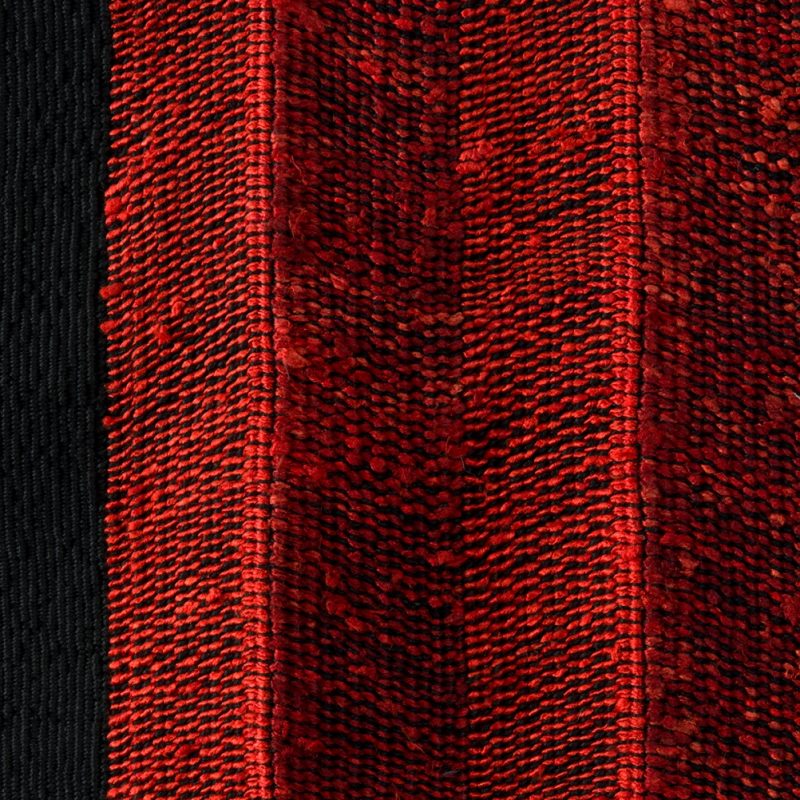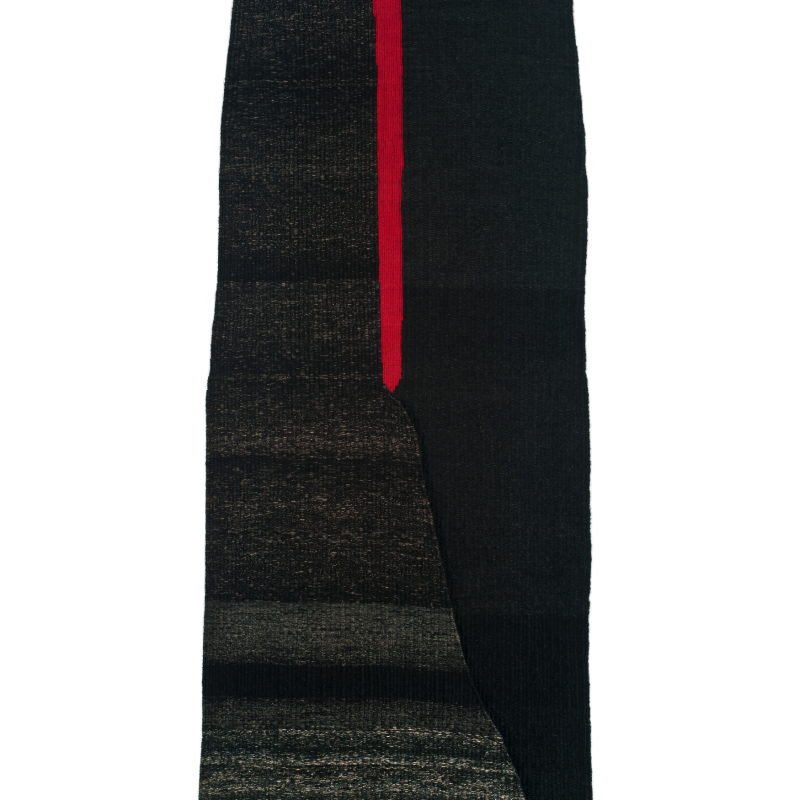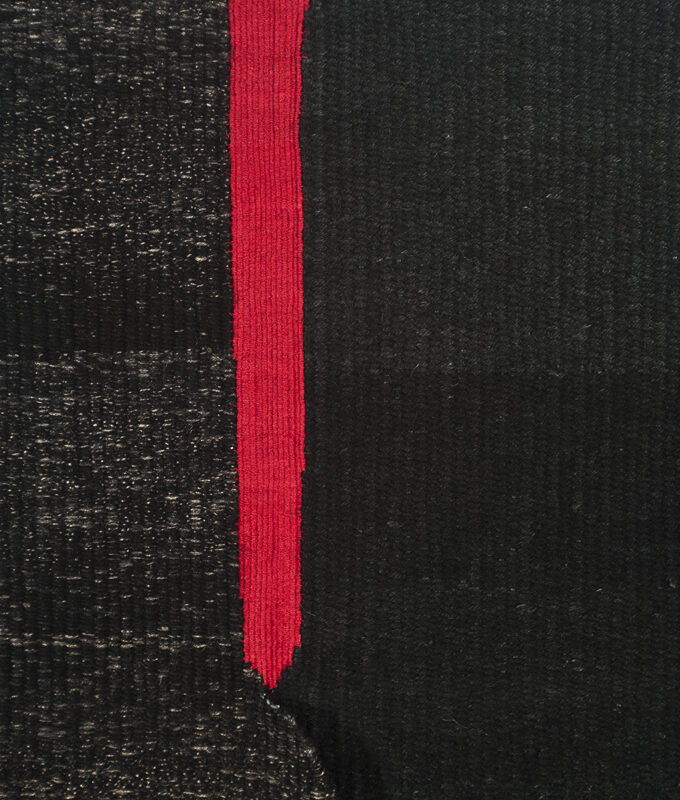Interview with Carolina Yrarrázaval
*“Huincha Tapicero-detail”, 2002, weaving, hemp and linen, 190 x 66 cm, ph cr. Patricia Novoa, copyright Carolina Yrarrázaval
Carolina Yrarrázaval, originally from Santiago, born in 1960, trained at the Faculty of Fine Arts of the University of Chile.
Her tapestries, in which dark chromatic shades predominate with red and orange overlaps, together with the essential elegance of vegetable fibers such as jute, silk, cotton, hemp and linen, are the result of continuous research about the weaving techniques of ancient cultures such as pre-Columbian and Japanese which the artist draws inspiration from, creating textile abstractions with a refined, sober and rigorous aesthetic.
Her works have been exhibited in numerous museums and art galleries including the Museum of Contemporary Art in Santiago, Chile; National Museum of Fine Arts, Santiago, Chile; Interamerican Bank Gallery, Washington, DC; Museum of Pre-Columbian Arts, Santiago, Chile; International Triennial of Tapestries, Lódz´, Poland; Chilean Consulate Gallery, New York, New York.
“El Abrazo”, 2019, weaving, jute and linen, 125 x 35 cm, ph cr. Patricia Novoa, copyright Carolina Yrarrázaval
How did your passion for weaving come about?
Ever since childhood, I felt a great attraction to play with textile materials. It was something natural for me. Later, when I commenced my art studies at university,
I discovered a magnificent textile workshop where I saw the possibility of developing that strong creative desire. A new world was opening up for me.
“Camino Sinuoso”, 2019, weaving, linen, silk, 20 x 30 cm, ph cr. Tom Grotta, copyright Carolina Yrarrázaval
Your tapestries have a strong minimalist, contemporary connotation, but at the same time speak to the heritage of the past. Which cultures and traditions influence your work?
I am nourished by all those cultures that maintain their ancient textile tradition. Africa, India and Japan, with their beautiful aesthetics, attracts me deeply Especially also Andean textiles for their delicacy and austerity that impacted me from a young age and have influenced my work ever since. I was able to contemplate beautiful and strong mountainous nature full of mineral colors and shadows. Sublime textiles were born amid precariousness and with surprisingly complex techniques.
“Oleadas de Recuerdos” is one of your most recent works. How did this work come about?
I have long felt the need to weave in layers. Layers of tissue that overlap one another, like memories that come and go. Like the waves of the sea that come in one after the other, causing constant, never-ending movement.
“Oleadas de Recuerdos”, 2019, weaving, jute, 140 x 78 cm, ph cr. Patricia Novoa, copyright Carolina Yrarrázaval
Intensely tactile, sober, rigorous, balanced and refined. Your works reveal intense research into the sensoriality of materials. Can you tell us about it?
When I came across vegetable fibers, I was inquisitive, I perceived them to be more difficult to work with, less docile. I soon discovered that they were of strong strong character, and I was interested in the challenge of uncovering their soul and being able to dialogue with them. At first, I tried to handle them, to master them until I learned from the Japanese what the beauty of imperfection is. Humility in front of the material in order to establish a real and egalitarian dialogue. Since then, it has been give and take with many materials such as linen, hemp, jute… Materials that make me want to touch and weave them. I do my best with them, and they have permanently provided me with certain complicity that moves me.

“Gran Shibori”, 1999, Shibori, Jute, 400 x 100 cm, ph cr. Patricia Novoa, copyright Carolina Yrarrázaval
Looking back into the past, how do you feel your work has changed from the beginning to today? Do you feel that there are significant aesthetic or conceptual differences between your early works and your more recent ones?
The concept has never been present in my creative development. Everything has been focused on feeling. In the beginning, I started with somewhat geometric compositions, experimenting, with the design and the use of color. They were more rigid jobs. It was a stage in which I tried to master the technique and the material. We have very structured training in everything in life especially in the art of weaving on a loom, which has a structure where what is being created is being built. It is challenging to break that vertical-horizontal. The amazement was when I gave myself the freedom to break down the structures, and I began to perceive a new beauty. The beauty of imperfection.
“Huincha Tapicero”, 2002, weaving, hemp and linen, 190 x 66 cm, ph cr. Patricia Novoa, copyright Carolina Yrarrázaval
Is inspiration to be expected or sought? What do you think? What is your experience?
I wouldn’t say that I look for it or find it, it just flows naturally. There is neither message nor interpretation. This simplification and freedom from conceptual constraints combine to reveal a language that conjures up other impressions, such as emptiness and the need for austerity looking for the essential, silence and solitude. It is a creative need that lives within me. A basic necessity, like breathing…
“Nostalgia”, 2019, Weaving, Jute and linen, 135 x 62 cm, ph cr. Patricia Novoa, copyright Carolina Yrarrázaval
In your opinion, what space does textile art have today within the Contemporary Arts sector? Has textile art finally succeeded in gaining the right to no longer be considered a minor art?
I think that for a long time, we can say that there are great artists who have chosen to develop themselves based on techniques and textile materials. They have been recognized and included in collections at museums, galleries and art biennials. This has undoubtedly increased.
Upcoming projects? What are you working on at the moment?
I have recently discovered coconut fiber, which has helped me get to know and create new works. New dialogues. New loves.
